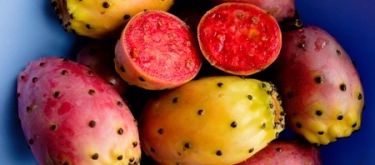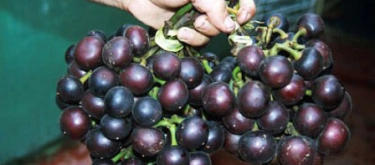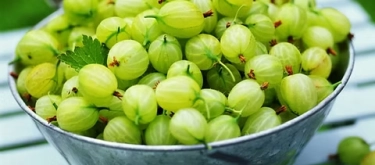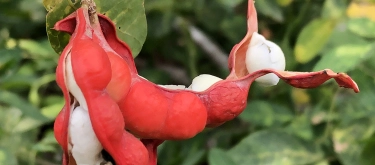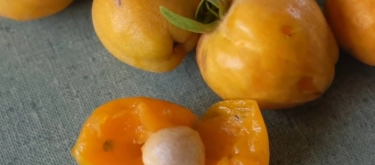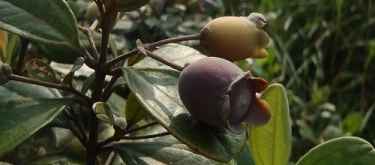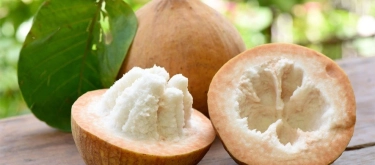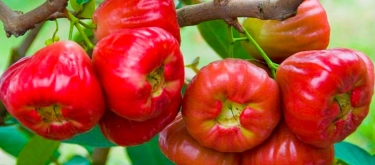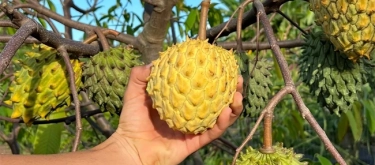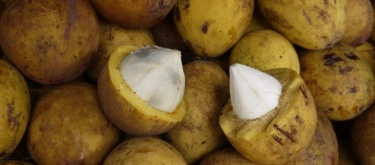Pereskia: Taste Profile, Aroma, Benefits and Health Risks
Pereskia (also known as Barbados Gooseberry, Ora-pro-nobis; Pereskia aculeata) is a unique tropical fruit-bearing cactus native to Central and South America, particularly Brazil and the Caribbean. Unlike typical cacti, Pereskia possesses leaves, and its fruits have been traditionally consumed and appreciated locally for their refreshing flavor, nutritional benefits, and medicinal qualities. Recently, Pereskia has gained global interest for its culinary versatility and distinctive sensory profile.
Pereskia fruits contain small seeds which can cause mild digestive discomfort if consumed in large amounts. Limited allergenic data is available; individuals sensitive to cactus or succulent plants should exercise caution. Due to limited safety information, pregnant and breastfeeding women should consume Pereskia moderately.
What does Pereskia taste like?
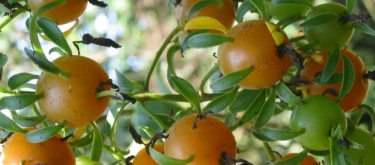
Complete Sensory Description:
Taste
Pereskia fruits offer a pleasantly mild sweetness combined with subtle acidity. Their taste is reminiscent of gooseberries, mildly tart apples, and fresh cucumber, creating a delicate, refreshing profile.
Aroma
The aroma of Pereskia is gentle, fresh, and mildly fruity, with delicate notes akin to green apple, cucumber, and faint citrus blossom undertones.
Texture
The fruit's exterior skin is thin and smooth, enclosing juicy, slightly mucilaginous pulp interspersed with small, edible seeds. The inner pulp is soft, watery, and refreshing, providing a gentle crunch from seeds, comparable in mouthfeel to kiwi or gooseberry.
Appearance
Pereskia fruits are small (1–2 cm in diameter), round berries clustered along the plant's branches. When ripe, fruits exhibit a bright yellow-orange or reddish-orange coloration, with translucent pulp and visible seeds inside.
In-depth Flavor Analysis:
Pereskia’s subtle yet appealing flavor emerges from a harmonious balance of sugars, mild acids, and minimal aromatic compounds:
-
Sweetness and Acidity: Pereskia fruit's mild sweetness originates from fructose and glucose, gently balanced by moderate amounts of malic acid, contributing subtle tartness. This combination results in a refreshing, cucumber-like or green apple flavor with gooseberry nuances.
-
Aromatic Complexity: Aromatic compounds in Pereskia fruit are minimal but include trace levels of aldehydes and terpenes such as linalool, offering faint floral and fruity notes. Volatile esters contribute slightly to fruity sweetness, yet the aroma remains mild overall.
-
Environmental Influence: Flavor intensity varies with ripeness, climate, and cultivation. Fruits harvested under warm, humid conditions typically exhibit enhanced sweetness and balanced acidity, ideal for consumption.
Varieties and Culinary Applications:
Pereskia typically exists as a single widely recognized species (Pereskia aculeata), with regional variants showing minor differences in fruit size and color. Culinary applications include:
- Fresh Consumption: Fruits are eaten fresh, often directly from the plant, as a refreshing snack.
- Salads and Garnishes: Due to mild flavor, fruits and leaves frequently garnish salads, providing subtle sweetness and textural interest.
- Beverages: Popular in juices, smoothies, infused waters, or refreshing herbal beverages, valued for hydration and mild flavor.
- Jams and Preserves: Occasionally used in jams, marmalades, or fruit sauces, combined with other fruits to enhance sweetness and texture.
Selection and Storage:
Select brightly colored, fully ripe Pereskia fruits that feel firm yet yield gently under slight pressure. Avoid excessively soft, bruised, or moldy berries. Fresh fruits are perishable; refrigerate in breathable containers and consume within two to three days. Freezing is possible but can negatively affect texture due to high moisture content.
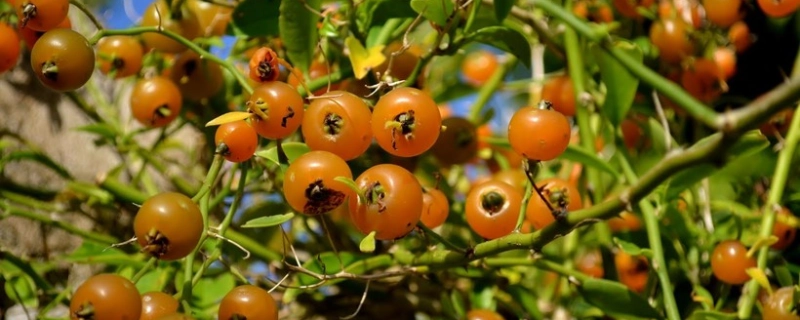
Nutritional Insights:
Pereskia fruits and leaves are notably nutritious, providing vitamins A, C, E, dietary fiber, calcium, iron, and antioxidants. Regular consumption may help address nutritional deficiencies, particularly iron deficiency, improve digestion via fiber, and enhance immunity with vitamin C. Antioxidant compounds offer protection against oxidative stress, beneficial for cardiovascular health and overall well-being.
Expert Insights & Culinary Tips:
- Flavor Pairings: Pereskia fruits pair well with other mild-flavored fruits, citrus juices, cucumber, mint, yogurt, and mild cheeses.
- Preparation Recommendations: For optimal taste, consume fruits chilled, highlighting their refreshing qualities. Gentle cooking or blending preserves the delicate flavors and nutrients, making them ideal for smoothies, juices, or salads.
- Seed Consideration: The small seeds are edible but can cause digestive irritation in sensitive individuals if consumed excessively; moderate intake is advisable.
Interesting and Curious Facts:
- Unlike typical cacti, Pereskia is unique for possessing leaves, giving rise to its nickname "leaf cactus."
- In Brazil, Pereskia leaves ("Ora-pro-nobis") are widely consumed as a leafy vegetable, highly nutritious and historically used as a source of protein and vitamins in regional diets.
- Indigenous peoples and local communities traditionally used Pereskia medicinally for its anti-inflammatory and digestive properties.
Harm and Dietary Considerations:
Pereskia fruits are safe when consumed moderately, though excessive consumption of seeds may cause mild digestive discomfort. Limited data exist regarding allergenicity, so individuals sensitive to cactus or succulent plants should approach with caution. Due to minimal safety research, pregnant women should consume Pereskia in moderation.
Religious Dietary Considerations:
Pereskia fruits have no known dietary restrictions within major religious practices, including Halal, Kosher, Hindu vegetarianism, and Buddhist dietary traditions, making them universally acceptable.
Final Thoughts & Sensory Journey:
Pereskia offers a gentle, refreshing sensory experience characterized by mild sweetness, subtle tartness, and delicate aromas. Its nutritional richness, culinary versatility, and unique botanical characteristics make Pereskia an intriguing and valuable tropical fruit deserving broader recognition.
Resources:
- "Edible Medicinal and Non-Medicinal Plants, Volume 5: Fruits" by T.K. Lim (Springer, 2013)
- "Tropical and Subtropical Fruits: Postharvest Physiology, Processing and Packaging" by Muhammad Siddiq (Wiley-Blackwell, 2012)
- "Underutilized Tropical Fruits and Vegetables" edited by P.K. Nair (Cambridge University Press, 2011)
